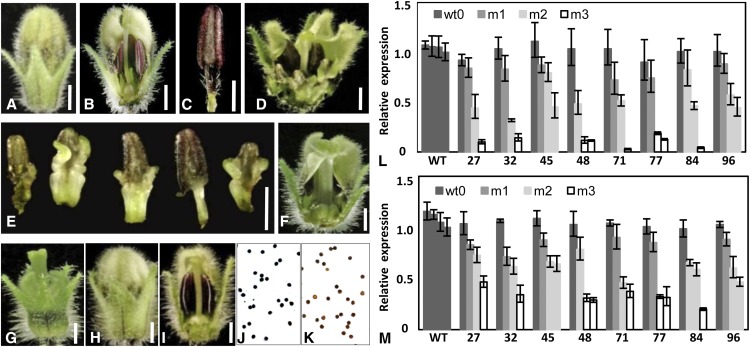Figure 5.
Down-regulating PFGLO1 in VIGS analyses phenocopies the doll1 mutant. A, An intact wild-type (WT) flower. B, A dissected wild-type flower to show the androecium and gynoecium. C, A stamen from a wild-type flower. D, A grade m1 flower from the PFGLO1-VIGS plants. E, Partially carpel-like androecium from a grade m1 flower. F, A grade m2 flower from the PFGLO1-VIGS plants. G, A grade m3 flower from the PFGLO1-VIGS plants. H, An intact pfglo2-flower from PFGLO2-VIGS plants. I, A dissected pfglo2 flower to show the androecium and gynoecium. Bars = 2 mm. J, I2-KI-stained pollen from a wild-type flower. K, I2-KI stained pollen of a pfglo2 flower from PFGLO2-VIGS plants. Active pollen is blue, while sterile pollen is tawny. L, Expression of PFGLO1 in PFGLO1-VIGS flowers. M, Expression of PFGLO2 in PFGLO1-VIGS flowers. Flowers that featured three grades of mutated phenotype (m1, m2, and m3) in eight VIGS-infected lines (27, 32, 45, 48, 71, 77, 84, and 96) were investigated. The expression of MADS-box genes in the wild-type flowers and the wild-type flowers from the VIGS-infected plants (Wt0) were also checked. PFACTIN was used as an internal control. The qRT-PCR analyses were repeated three times using independent biological samples. Mean expression values and sd are presented.

